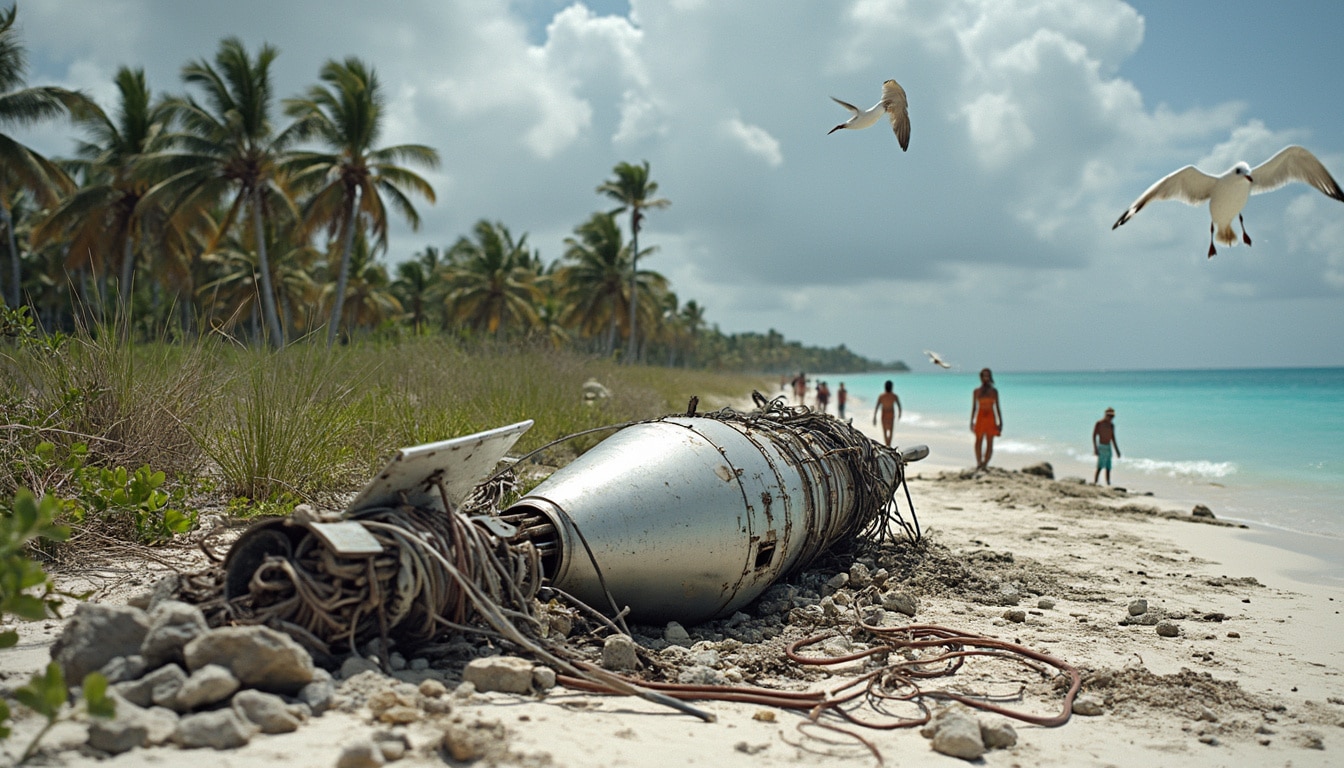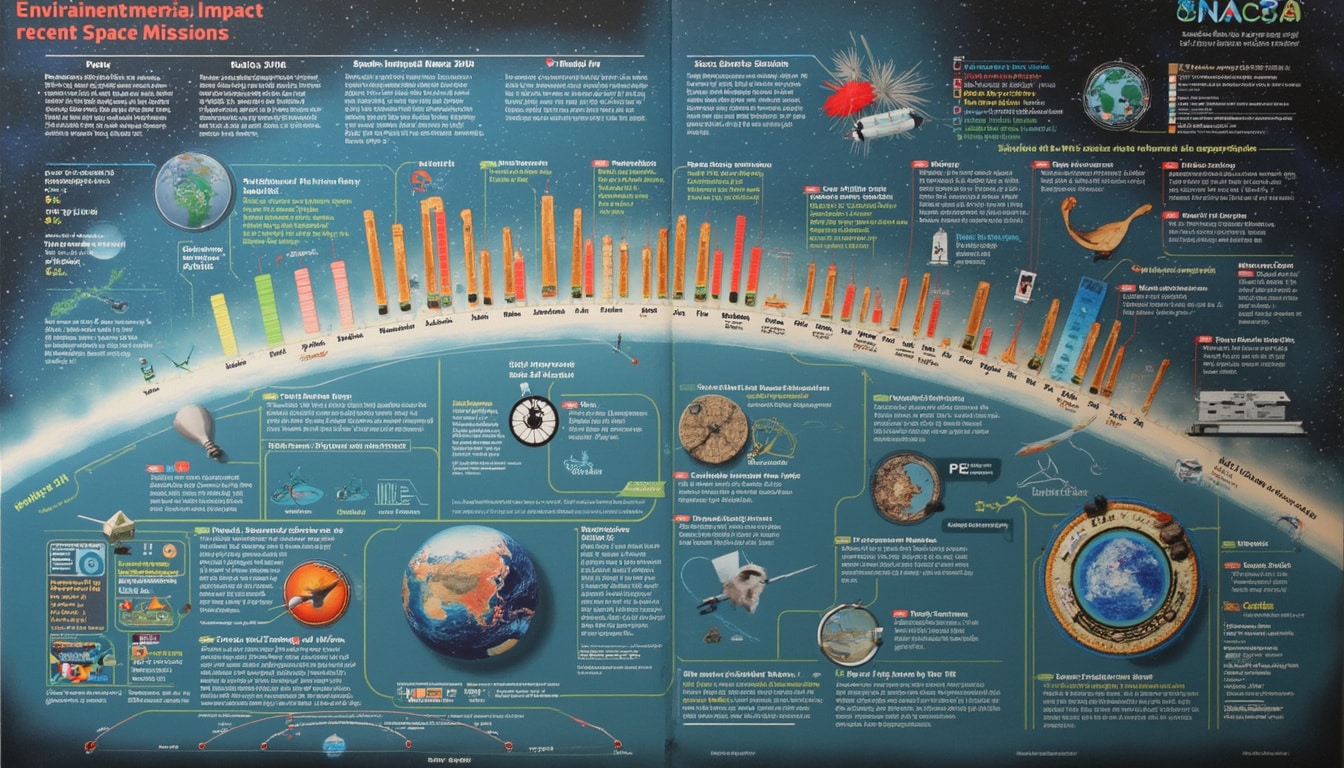Recently, the discovery of rocket remnants from Blue Origin and SpaceX in locations such as the Bahamas and various parts of Europe has sparked significant interest. These remnants provide a glimpse into the expanding impact of space exploration on our planet and the environmental implications of such activities. As spacecraft are launched and re-enter the atmosphere, the debris they leave behind poses challenges not only to aviation safety but also to our understanding of how to manage space debris research effectively. In this exploration, we will uncover details about these discoveries, their implications, and the ongoing investigations into various spacecraft artifacts.
The occurrences of SpaceX rocket parts and Blue Origin debris landing outside of controlled areas raise critical concerns regarding regulatory measures surrounding spaceflight operations. Both companies have opened dialogues about maintaining safe distances from populated areas to prevent accidents. The recent findings have prompted investigations from authorities to assess the impact of these launches, especially since environmental effects are becoming a central focus among space organizations and governmental bodies alike.
Examining the Recovery of Rocket Remnants
As space exploration continues to thrive rapidly, numerous incidents have demonstrated the consequences of rocket re-entries. The discovery of rocket parts sheds light on the rocket recovery process and the necessity for accountability in the aerospace industry. The Bahamas recently made headlines following the retrieval of several spacecraft remnants which were tracked back to recent SpaceX launches. This matter raised eyebrows globally, emphasizing the importance of stricter adherence to guidelines during launches.

The Regulatory Landscape for Space Activities
Regulating the activities of private space companies is a daunting task. With the rapid pace of advancements, ensuring safety and environmental accountability often lags behind. In recent years, bodies such as the Federal Aviation Administration (FAA) have been pressured to scrutinize various elements of launch operations. Specifically, the FAA’s authority has been called upon to examine new regulatory frameworks as outlined in investigations surrounding SpaceX’s launch practices. The push for more suitable protocols is increasingly crucial given the rise in reported incidents of falling rocket debris.
The issues around safety protocols are further highlighted by the discovery in the Bahamas, which involved not only Blue Origin finds but also resulted in commands for immediate action from governmental entities. As the discussion continues about the intersection of innovation and responsibility, global efforts to improve launch practices are beginning to take shape.
The Environmental Impact of Space Exploration
The environmental implications of space travel remain a growing concern. As we witness the increasing frequency of launches from companies like SpaceX and Blue Origin, discussions about atmospheric pollution and the ecological effect of debris become imperative. Investigative reports such as those found at Assessing the Environmental Impact emphasize the critical need for environmental impact assessments to accompany future missions. These assessments can help in crafting policies that mitigate risks associated with rocket launches and their subsequent fallout on ecosystems.

Practical Solutions for Space Debris Management
With the complications arising from space debris research, finding practical solutions becomes paramount. Various nations are exploring innovative methods to counteract the problem of remnants in Earth’s atmosphere. Initiatives focusing on cleanup strategies, satellite de-orbiting plans, and even legislative improvements are gaining attention. Companies such as ClearSpace are pioneering projects to actively remove hazardous debris. The drive towards sustainability is vital in preserving our planet and managing advancements in space technology without compromising ecological integrity.
Incorporating more sustainable practices into rocket design can also alleviate some resultant debris. By crafting vehicles that can safely de-orbit upon conclusion of their missions, the space industry may reduce the risks of future debris encounters. The necessity for governments worldwide to collaborate on stricter guidelines cannot be overstated. Moreover, the SpaceX investigations currently underway could indeed set a precedent for future regulations and operational conduct in the aerospace sector.
Global Reactions to Discoveries of Rocket Parts
The implications of finding rocket remnants in populated areas transcend beyond scientific curiosity. Communities located near launch sites or potential landing zones are increasingly expressing concern regarding safety and property damage. Recent incidents, particularly those involving SpaceX launches, have led to airports facing operational disruptions. Flights were reportedly forced to divert to secure airspace, driven by rocket debris in the vicinity. This leads to larger questions on how to communicate best with local populations to manage expectations and ensure safety while promoting continued space exploration.
Public Awareness and Education
Raising awareness about the challenges of space exploration, particularly concerning space debris, has become a priority. Organizations, both governmental and non-governmental, are galvanizing support to educate the public about the realities of space activities and their implications. Social media campaigns and educational programs aim to disseminate information regarding how local communities can contribute to environmentally responsible practices and stay informed about the potential dangers associated with rocket launches.
Through discussions and collaborative community efforts, space agencies can alleviate concerns from the public while addressing environmental safety. Social media plays a vital role in providing instant updates, and as demonstrated by this article, it can amplify crucial environmental messages. Leveraging platforms such as Facebook, Twitter, and Instagram serves to keep the conversation ongoing and builds an informed public ready to engage with the challenges surrounding advancements in space technology.
Future of Space Exploration and Debris Management
As humanity continues its journey into the cosmos, the ongoing evolution of debris management will dictate the sustainability of our endeavors. Engaging with private companies and fostering collaborations between nations will play a critical role in shaping future trajectories. The international community must rally together to establish binding agreements to regulate and monitor launches, encompassing aspects from operational safety to environmental integrity. Currently, discussions surrounding the FAA’s authority and regulatory adjustments are underway—as highlighted in various reports—leading to an increased emphasis on operational accountability.
Technological Advancements and Innovations
The emerging technologies focused on debris removal and reshaping rocket design are promising steps toward a sustainable future. Innovations in propulsion systems, artificial intelligence, and partnerships among private companies lay the groundwork for more efficient launch practices with minimal ecological impact. As seen with recent developments at organizations like NASA and SpaceX, recognizing the potential disruptions caused by falling rocket parts remains key to promoting both exploration and protection of our planet’s environment.
Engaging with biologists and environmentalists in formulating strategies ensures that planning encompasses both space innovation and terrestrial stability. Building a balanced framework of operation will allow future generations to explore the stars without fear of causing harm to our beautiful home planet.
| Company | Debris Discovery Location | Launch Date | Investigative Status |
|---|---|---|---|
| SpaceX | Bahamas | February 2025 | Ongoing |
| Blue Origin | Europe | February 2025 | Ongoing |
| SpaceX | Florida | February 2025 | Pending |




Leave a Reply